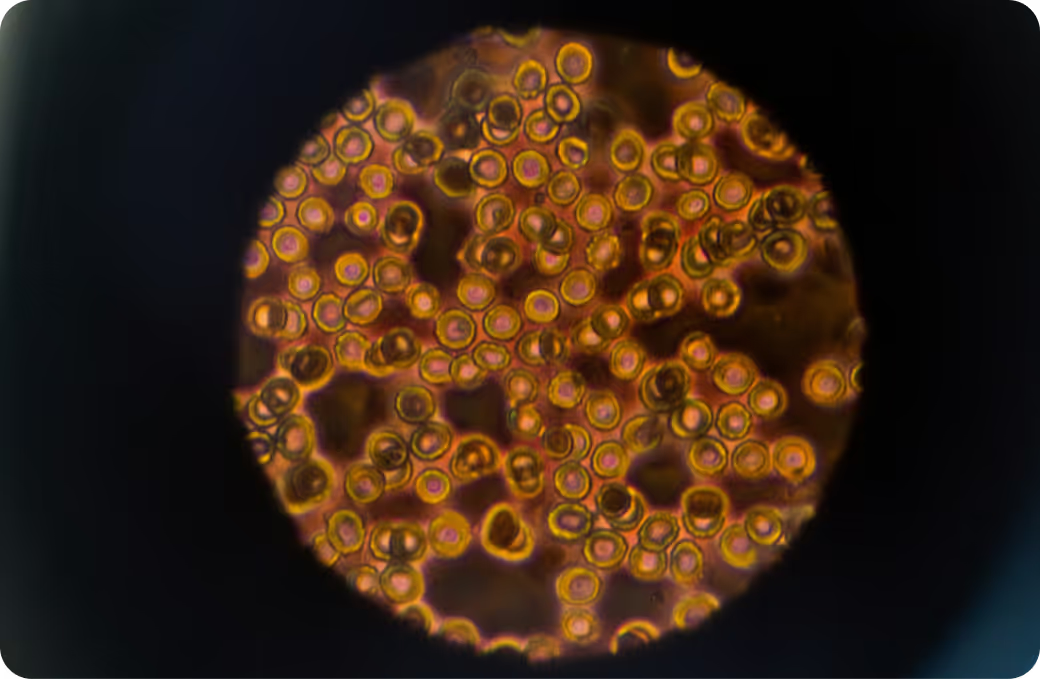Key Insights
- See how concentrated your urine was at collection so your environmental toxin results can be compared fairly with typical levels.
- Spot when an apparent spike or drop in a toxin likely reflects urine dilution or concentration rather than a true change in exposure.
- Clarify whether toxin readings plausibly relate to symptoms by adjusting for hydration and sampling context before assuming a biological effect.
- Support reproductive planning and pregnancy safety by using creatinine-normalized toxin values when urine concentration naturally shifts across life stages.
- Track true exposure trends over time with a stable anchor, even if your fluid intake, workouts, or schedule vary between tests.
- Inform conversations with your clinician about when to repeat testing, consider a timed or first‑morning sample, or explore additional evaluations.
What is Urine Creatinine?
Urine creatinine is a natural waste product your muscles make as they recycle creatine, the same molecule many people take in pre‑workout supplements. Your kidneys filter creatinine into urine throughout the day. Because creatinine is produced at a relatively steady rate and excreted into urine, labs measure it in spot urine samples to gauge how concentrated or dilute that sample is. In environmental health testing, many urinary toxin levels are reported “per gram of creatinine,” which helps put everyone on a level playing field when comparing results collected at different times or hydration states.
Creatinine itself is not an environmental toxin. It is a context marker that helps interpret other urine measurements. After absorption, most environmental chemicals that are measured in urine are metabolized by the liver and eliminated by the kidneys. Creatinine adds crucial context by indicating the sample’s concentration at that moment, which can shift with hydration, exercise, time of day, and life stage. The result does not diagnose kidney disease or overall body burden, but it does improve the accuracy of interpreting urine‑based exposure markers. Large biomonitoring programs use this approach because it reduces misclassification from variable urine dilution, though method and population differences still matter.
Why Is It Important to Test For Urine Creatinine?
Urine toxin levels can look very different if you gave the sample after a long run, a salty meal, or a big water bottle. Measuring urine creatinine alongside environmental analytes helps separate signal from noise. A concentrated sample can make everything look “higher,” while a very dilute sample can make results seem deceptively “low.” By anchoring toxin values to creatinine, you can better distinguish incidental contact from sustained exposure, spot workplace or household contributors, and understand when an unexpected value might be a sampling artifact rather than a true biological change. This is especially helpful during pregnancy, early childhood, and in people with lower muscle mass, when urine concentration can vary more day to day.
Big picture, urine creatinine lets you read your environmental results in context. No single number tells the whole story. Patterns across multiple toxins, creatinine‑normalized values, general health markers, and your lived experience provide the most reliable view of risk over time. Trends and consistency matter more than a one‑off result. That is how you move from worry to evidence, and from guesswork to informed next steps with your care team.
What Insights Will I Get From a Urine Creatinine Test?
Labs typically report urine creatinine as a single number for your sample and may provide a population‑based reference interval that varies by age and sex. Many environmental results are then expressed relative to creatinine, which helps make fair comparisons across people and across time. Because spot urine reflects a moment in your day, repeat testing and noting recent factors like heavy exercise, high fluid intake, or creatine supplementation can make interpretation far more precise.
Relatively lower urine creatinine usually indicates a more dilute sample. In practical terms, that often means recent high fluid intake or collection later in the day. When dilution is high, toxin values can appear lower than your true exposure. This matters for groups with naturally lower urine creatinine, including many children, pregnant individuals, and people with lower muscle mass. In these settings, creatinine‑normalized reporting helps reduce bias so you are not underestimating exposure simply because the urine was more dilute.
Relatively higher urine creatinine points to a more concentrated sample. This is common with first‑morning collections, after intense workouts, with lower fluid intake, or in the setting of higher muscle mass. Concentration can make toxin readings look higher even if exposure has not changed. Creatinine provides a correction, and repeating the test under similar conditions helps confirm whether a pattern is real. If specific organ systems are sensitive to a given toxin, clearer interpretation after creatinine adjustment can better connect the dots between exposure and potential endocrine, neurologic, hepatic, or immune stress. Still, confirmation with trends and clinical context is essential, and symptoms rarely map to a single test result.
Context and limitations are part of high‑quality interpretation. Urine creatinine reflects sample concentration, not kidney health, and it can vary with age, sex, muscle mass, diet, and supplements. Measurement methods differ between labs; enzymatic assays are generally less prone to interference than older chemical methods, which can be affected by substances such as ketones, high glucose, bilirubin, or vitamin C. First‑morning voids and timed collections can reduce variability, but even then, day‑to‑day physiology introduces noise. That is why environmental toxin results are most meaningful when paired with creatinine, viewed across time, and considered alongside other health indicators. Over multiple data points, you can separate transient spikes from persistent exposure patterns and make smarter, safer choices with your clinician’s guidance.







.avif)



.svg)





.svg)


.svg)


.svg)

.avif)
.svg)










.avif)
.avif)
.avif)


.avif)
.avif)




.svg)


